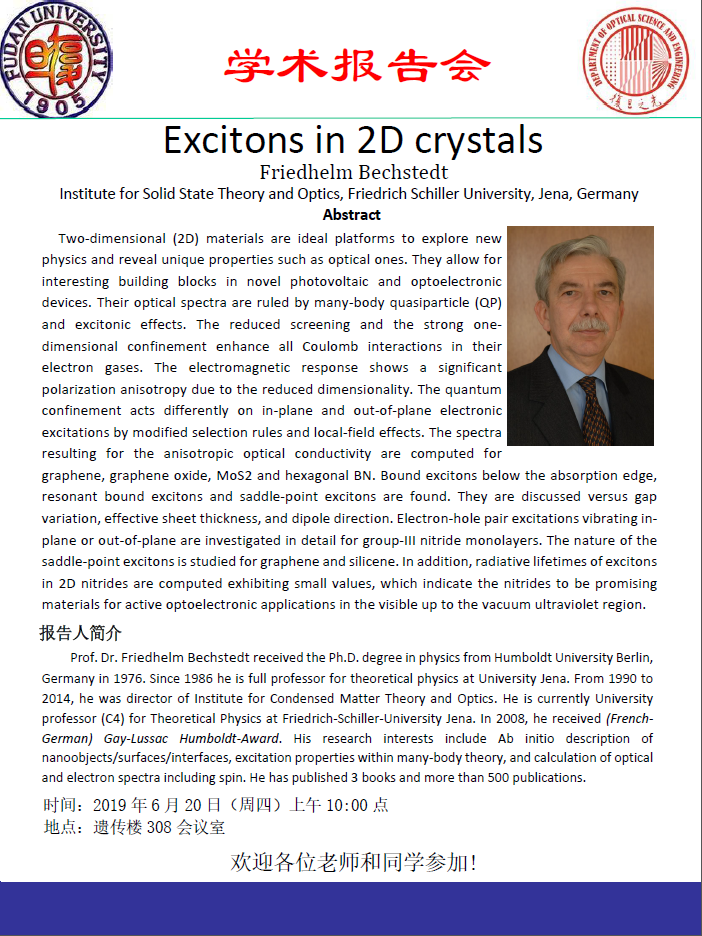Excitons in 2D crystals
Speaker: Friedhelm Bechstedt, Friedrich Schiller University, Germany
Time and Date: 10:00 am, June 20, 2019
Place: Room 308 of Genetics Building, Handan Campus, Fudan University
Abstract:
Two-dimensional (2D) materials are ideal platforms to explore new physics and reveal unique properties such as optical ones. They allow for interesting building blocks in novel photovoltaic and optoelectronic devices. Their optical spectra are ruled by many-body quasiparticle (QP) and excitonic effects. The reduced screening and the strong one-dimensional confinement enhance all Coulomb interactions in their electron gases. The electromagnetic response shows a significant polarization anisotropy due to the reduced dimensionality. The quantum confinement acts differently on in-plane and out-of-plane electronic excitations by modified selection rules and local-field effects. The spectra resulting for the anisotropic optical conductivity are computed for graphene, graphene oxide, MoS2 and hexagonal BN. Bound excitons below the absorption edge, resonant bound excitons and saddle-point excitons are found. They are discussed versus gap variation, effective sheet thickness, and dipole direction. Electron-hole pair excitations vibrating in-plane or out-of-plane are investigated in detail for group-III nitride monolayers. The nature of the saddle-point excitons is studied for graphene and silicene. In addition, radiative lifetimes of excitons in 2D nitrides are computed exhibiting small values, which indicate the nitrides to be promising materials for active optoelectronic applications in the visible up to the vacuum ultraviolet region.
Biography:
Prof. Dr. Friedhelm Bechstedt received the Ph.D. degree in physics from Humboldt University Berlin, Germany in 1976. Since 1986 he is full professor for theoretical physics at University Jena. From 1990 to 2014, he was director of Institute for Condensed Matter Theory and Optics. He is currently University professor (C4) for Theoretical Physics at Friedrich-Schiller-University Jena. In 2008, he received (French-German) Gay-Lussac Humboldt-Award. His research interests include Ab initio description of nanoobjects/surfaces/interfaces, excitation properties within many-body theory, and calculation of optical and electron spectra including spin. He has published 3 books and more than 500 publications.


